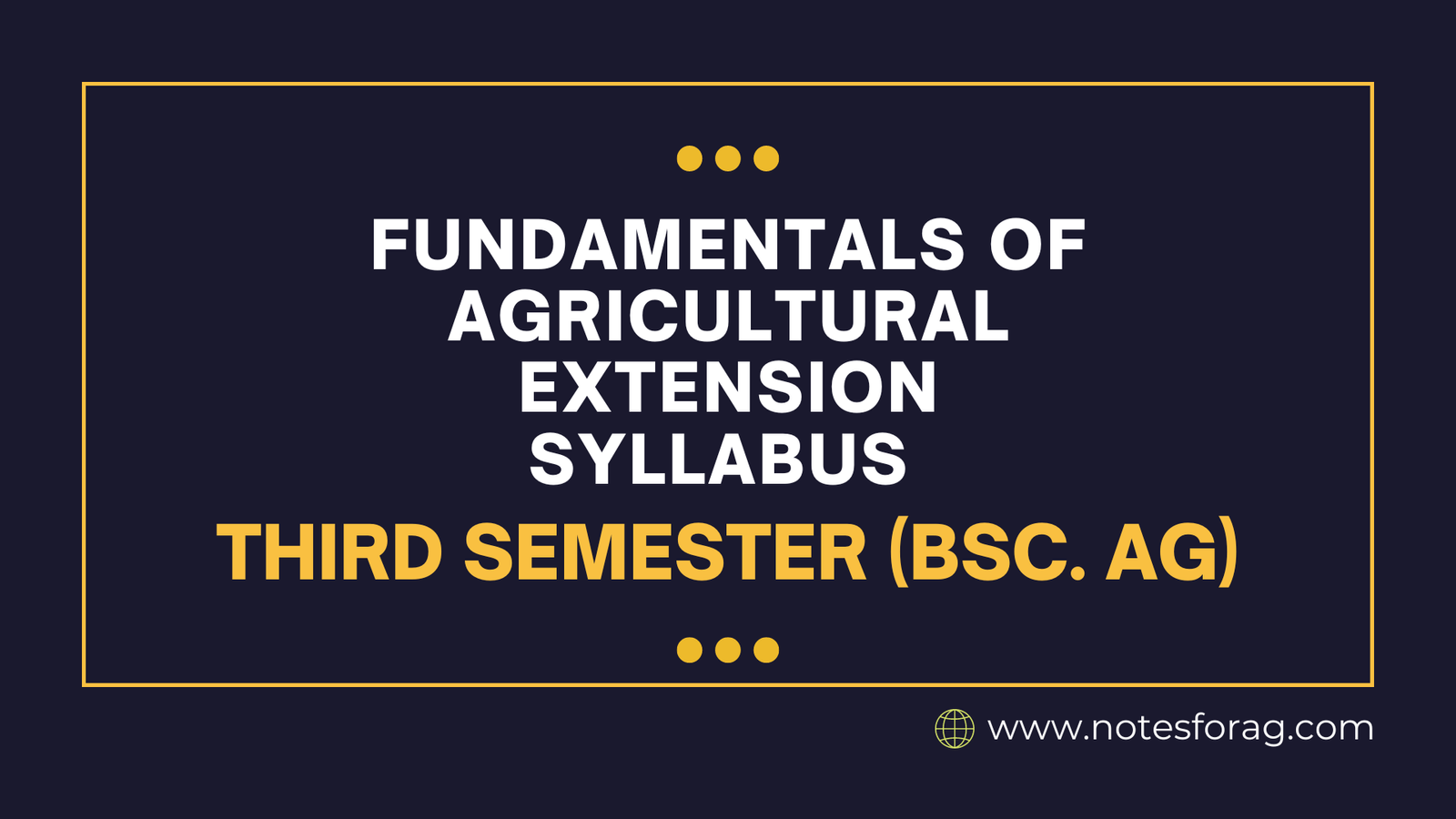| Course Code | EXT 202 |
| Course Title | Fundamentals of Agricultural Extension |
| Credit Hour | 3(2+1) |
| Full Marks | 75 |
| Theory | 50 |
| Practical | 25 |
Objectives
Upon the completion of this course, the students will understand the basic concept of education and extension education, their principle, philosophy, objective, method, system,s and practices, etc., and apply the agricultural extension knowledge to the farming community.
Syllabus of Fundamentals of Agricultural Extension in Bsc. Agriculture
Meaning, concept, definition, and type of education and extension education, their objective, role in agricultural development, Principle, Philosophy, and method of extension education derived from the psychology of education and their application to agricultural extension. Historical perspective of extension education and scope of agricultural extension, their system, organizational setup, and method used in extension education. Extension teaching-learning process, agricultural technology, and transfer of technology. Program planning their characteristics, type, level, and the principle of a good program planning process. Identification, characteristics, selection of local leaders, and their roles in the agricultural extension program. Role, function, organizational setup of LGS of Agricultural college and University in agriculture development. Monitoring and evaluation of extension program
Course Outline
A. Theory
B. Practical
| S.N | Topic / Chapter Name | No. of Lectures |
| 1 | Preparation of farm-level production plan 1.1 Crop production 1.2 Livestock production (simulated) | 1 |
| 2 | Interaction visit and meeting to study program planning process, plan of work, organizational setup, function and responsibilities 2.1 DADO/DLS and DIO 2.2 LDO, Financial Institutions 2.3 NARC 2.4 ASC and Farmer’s Group | 2 |
| 3 | Interaction visit and meeting with an I/NGO/CBOs/Co-operatives/ 1 Private sectors and their local group study their program planning process, plan of work, and implementation | 2 |
| 4 | Preparation of general community level plan of production in field crop, fruits, vegetables, and livestock production (selective and simulated) | 7 |
| 5 | Visit and interaction meeting with commercial farmer’s group formed by 5.1 DADO for extension program 5.2 PRA, RRA 5.3 Problem Sensing and Problem Solving Techniques | 2 |
| 6 | Conducting a village-level Agricultural Extension Research: (Proposal writing to report presentation) | 1 |
| Total | 15 |
References
- W. Van Den Ban & H. S. Hawkins.1988. Agricultural Extension. Longman Scientific & Technical Copublished in the united states with John Wiley & sons. Inc Newyork.
- B. S. Dongol. 2004. Extension Education. Prativa Singh Dongol printer’s Gopal tole Kathmandu, Nepal.
- B. Kumar and B. H. Hansra. 2000. Extension Education for Human Resource Development. Concept Publishing Company, New Delhi, India.
- D. Dasgupta. 2008. Extension Education: Core contents and emerging areas. Agrobios Jodhpur. India. ISBN-10:8177543709,
- J. L. Ray. 1999. Extension Communication and Management. Fourth edition. Naya Prakash. India.
- Mosher, A.T. 1978. An introduction to Agricultural Extension. ADC, New York.
- O. P. Dahama and O. P. Bhatnagar. 1998. Education and Communication for Development. Oxford and IBH publishing company Private Limited. New Delhi.
- P. Oakley and C. Garforth. 1985. A Guide to Extension Training. The University of Reading UK.
- Roling, N. 1988. Extension Science. Information systems in Agricultural Development. Cambridge University Press. New York.
- Swanson, B.E. (Ed.) (1984). Agricultural Extension: A Reference Manual. (2nd Ed.), FAO, Rome

